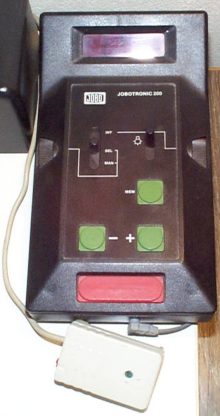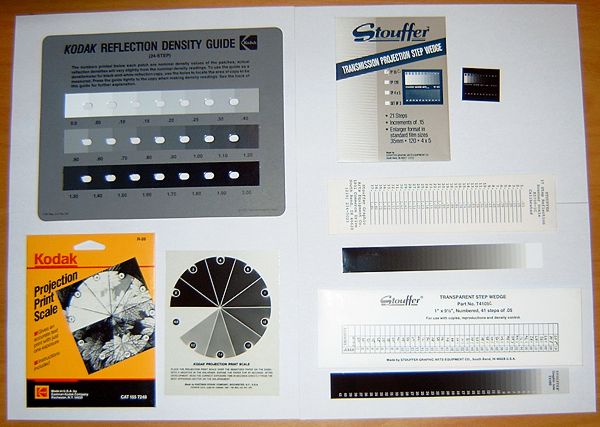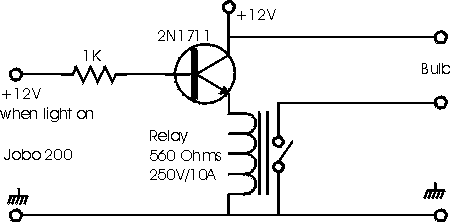
Back to home page
Back to photography main page
Back to equipment page
The Jobotronic 200 (out of production) groups the functions of a timer and luxmeter/densitometer.

Here are its caracteristics:
Manual
JPG version: Controls - Probe mounting - Pages 1, 2, 3, 4, 5, 6
Speed adjustment
As there are no direct ISO(P) adjustment, you have to evaluate it by yourself.
Pay attention that I'm not sure at all that the following informations are consistent from
sample to sample.
Keep in mind that the Jobo cell nor the bulb of your enlarger have the same spectral
balance as your paper.
So, for multigrade papers, you should make test strips with each grade and obtain the same
final density in order to calculate each grade real jobo speed.
One word about which density to use, 0.60 is a good choice as paper speeds are given for such density and many papers have their sensitometric curves crossing on that point.
Example for the Ilford Multigrade IV RC and *my* configuration:
| Grade | V35 color head filter | Jobo speed (selective) |
| 00 | 150Y | 14 |
| 0 | 95Y | 12.5 |
| 0.5 | 65Y | 11.5 |
| 1 | 50Y | 11 |
| 1.5 | 25Y | 9.5 |
| 2 | 0 | 8.2 |
| 2.5 | 20M | 8.3 |
| 3 | 40M | 8.5 |
| 3.5 | 65M | 8.6 |
| 4 | 85M | 8.8 |
| 4.5 | 140M | 9.3 |
| 5 | 200M | 9.4 |
Another interesting method for simpler analyzers by Paul Butzi.
Here are some useful and very cheap tools that could help you in testing films/papers:

Left column:
Right column:
This modification lets you drive directly high currents like with a 12V stabilized power supply.
The positive impulse is taken between the ground and the relay.
As the timer has not enough energy to power directly the relay, a transistor acting as
buffer is inserted, the 1K resistor limits the current drawn from the Jobotronic.
There is not so much place inside the timer to insert this small circuit, so it was
inserted inside the regulated supply itself.
The impulse arrives from the timer through a cable and 3.5mm jacks.
